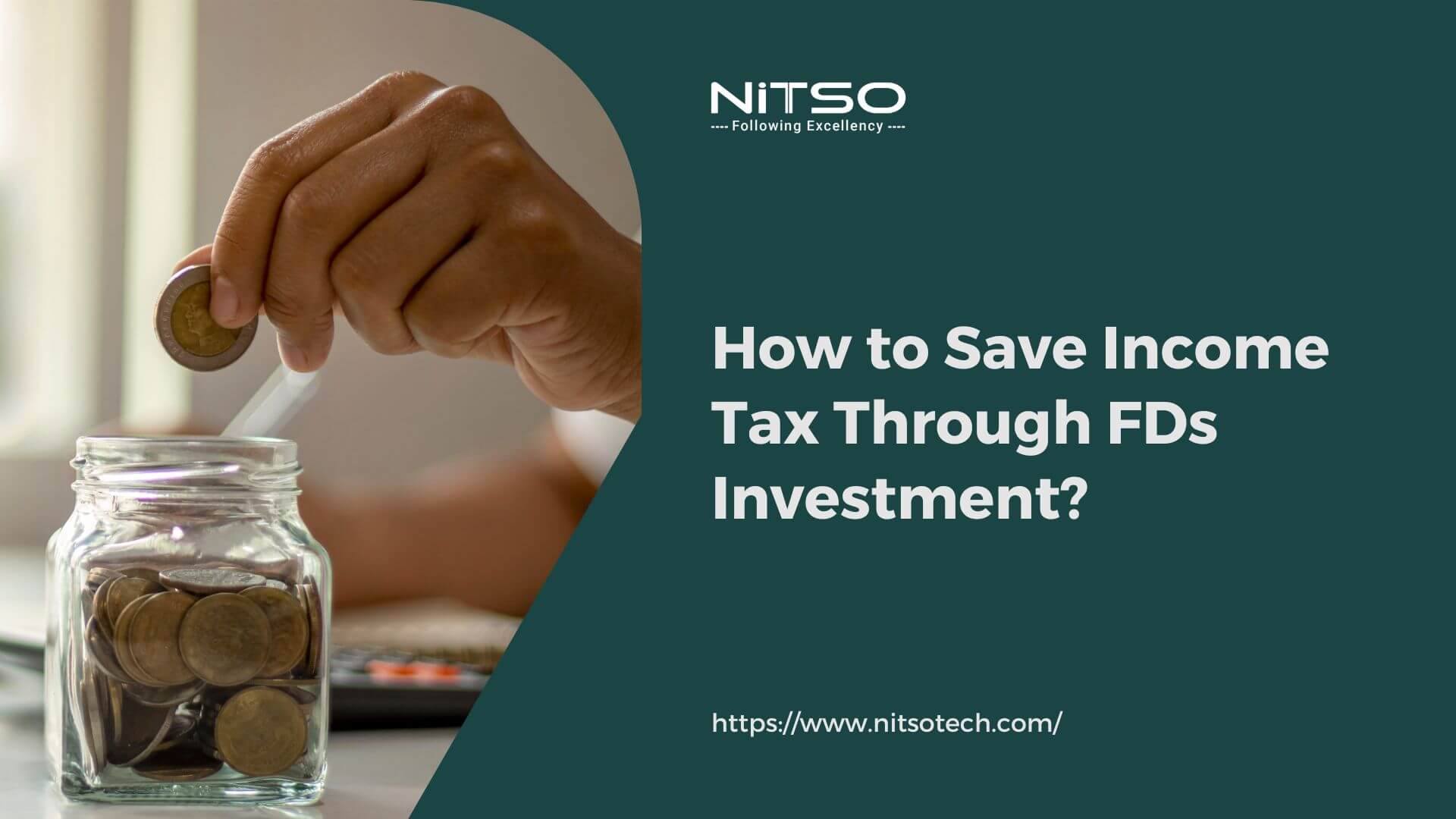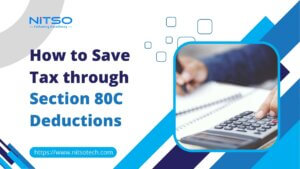Paying taxes is a duty of every citizen. However, there are legal and ethical ways to reduce your tax liability using permitted deductions and exemptions. One such option is to save income tax through FDs (Fixed Deposits) investment to minimize your taxable income.
FDs offer guaranteed returns and help secure your savings from market volatility. At the same time, they allow you to claim deductions under Sections 80C, 80TTA and 80TTB of the Income Tax Act if invested prudently. This can significantly reduce your taxable income and your tax liability.
In this comprehensive guide, we will explore how to optimize your tax savings through careful FD planning. We will cover the various options to invest in FDs, maximize deductions, align investments efficiently and ladder deposits to gain maximum tax benefit.
With some diligent planning and tactical investing, you can save thousands in income tax legally by making the most of FDs. Read on to find out how.
Content on This Page
What are FDs and How Do They Work?
Fixed Deposits (FDs) are a secure investment option offered by banks and non-banking financial companies (NBFCs) in India. An FD is a deposit made with a financial institution for a fixed tenure ranging from 7 days to 10 years.
When you invest in an FD, you deposit a lump sum amount with the issuer for a specific period. The key features of FDs are:
- Maturity Period: You can choose the tenure as per your needs – 7 days, 15 days, 1 month, 6 months, 1 year, 2 years etc up to 10 years. The longer the duration, the higher the interest rate offered.
- Interest Rates: FDs offer guaranteed returns in the form of interest. Interest rates vary across issuers but generally range from 3% to 7% for regular citizens. Senior citizens get an additional 0.25% to 0.50% higher interest.
- Deposit Amount: You can invest any amount in FDs starting from Rs 1,000 to Rs 1 crore or above. Different banks have different minimum investment criteria.
- Interest Payout: Interest can be paid out monthly, quarterly, half-yearly, annually or on maturity. You can choose the payout frequency as per your liquidity needs.
- Premature Withdrawal: You cannot withdraw your FD amount before maturity unless in exceptional circumstances. Premature withdrawals lead to a penalty in interest payout.
- Taxation: Interest earned is fully taxable as per your income tax slab. You can use FDs for tax savings under Sections 80C, 80TTA and 80TTB.
FDs are one of the safest investment options as they are unaffected by market volatility. They provide fixed guaranteed returns and help you meet short-term and long-term financial goals.
How to Save Income Tax Through FDs?
Fixed Deposits can help you reduce your taxable income and save tax under various sections of the Income Tax Act, of 1961. Here are some of the key ways FDs can be used for tax savings:
- Section 80C Deduction: You can claim a deduction of up to ₹1.5 lakh under Section 80C by investing in 5-year tax-saving FDs. The interest earned is taxable but the principal qualifies for deduction.
- Section 80TTA Deduction: Interest income up to ₹10,000 from savings and FD accounts is exempt from tax under Section 80TTA. You can split deposits across banks to claim higher deductions.
- Section 80TTB Deduction: Senior citizens can avail of an additional ₹50,000 deduction on FD interest income under Section 80TTB. So they can earn up to ₹60,000 tax-free interest.
- Earning Interest Income: The interest income from FDs is taxable but adds to your total taxable income. If it pushes you to a higher tax bracket, your tax liability increases. So, plan FD investments wisely.
- Capital Gains on FDs: FDs also attract capital gains tax on earnings beyond ₹1 lakh in a financial year. So factor this in while planning your FD investments for tax efficiency.
- Claiming TDS: If TDS is deducted from your FD earnings, you can claim it while filing returns to reduce your overall tax liability.
The key is to invest strategically in FDs across sections to maximize your 80C, 80TTA and 80TTB deductions. This requires careful planning and allocation to reduce tax legally.
Ways to Save Income Tax Through FDs
There are several provisions in the Income Tax Act that allow you to reduce your tax liability through strategic FD investments. The three main sections are 80C, 80TTA and 80TTB.
Let’s check out the key options available under each and provide examples to help you understand the benefits clearly. With some planning, you can distribute your FD investments across these sections to maximize deductions and minimize your taxes.
Invest in FDs up to Rs 1.5 lakh under Section 80C
You can claim a deduction of up to Rs 1.5 lakh under Section 80C by investing in 5-year tax-saving FDs. The interest earned is taxable but the principal qualifies for deduction.
For example, if you deposit Rs 1.5 lakh in a 5-year tax-saving FD with 7% interest, you earn Rs 52,500 as interest over 5 years. While the interest is taxable, you can claim a deduction of Rs 1.5 lakh invested under Section 80C to reduce your taxable income for that year.
Invest in FDs in the name of the spouse under Section 80TTA
Interest income up to Rs 10,000 from savings and FD accounts is exempt from tax under Section 80TTA. You can split deposits across banks to claim higher deductions.
For example, you can invest Rs 5 lakh in your spouse’s name across 5 banks at 7% interest. This will generate Rs 35,000 tax-free interest per year under Section 80TTA.
Invest in tax-saving FDs under Section 80C
Tax-saving FDs of 5-year tenure can get you deductions under Section 80C. The principal invested qualifies for deduction while the interest is taxable.
For example, investing Rs 1.5 lakh each in self and spouse’s name in 5-year tax-saving FDs can potentially give you a Rs 3 lakh deduction under Section 80C in a financial year.
Invest in FDs for senior citizens under Section 80TTB
Senior citizens (age 60 years and above) can avail of an additional deduction of up to Rs 50,000 on FD interest income under Section 80TTB over and above the Section 80TTA limit.
For example, a senior citizen can invest across FDs to earn up to Rs 60,000 as tax-free interest per year. This includes the Rs 10,000 exemption under Section 80TTA plus another Rs 50,000 under Section 80TTB.
Tips for Optimizing Tax Savings Through FDs
While investing in the right FDs across Sections 80C, 80TTA and 80TTB is important, optimizing your savings involves more. You need to plan your FD investments taking into account factors like tenure, interest payouts, liquidity needs, other investment avenues etc.
This section provides tips on choosing suitable tenures, laddering investments, aligning with other tax-saving options and more to help you maximize savings through FDs. Here are some tips:
Choosing the right FD tenures
- Opt for 5-year tax-saving FDs to avail of Section 80C deduction up to Rs 1.5 lakh.
- Split deposits across multiple banks for a tenure of 1-2 years to maximize Section 80TTA benefit.
- For senior citizens, choose short-term FDs of less than 5 years to get tax benefits under Section 80TTB.
Using multiple FDs across Sections 80C, 80TTA, 80TTB
- Use Section 80C limit fully for 5-year tax-saving FDs.
- Deploy Section 80TTA by spreading out 1-2 year FDs across banks.
- Senior citizens can further optimize with Section 80TTB FDs.
This ensures you avail all deductions legally.
Investing in FDs in a staggered manner
- Invest annually in FDs for Section 80C rather than a lump sum to claim deductions each year.
- Ladder deposits with different maturity dates to get regular interest income.
- Store funds in liquid funds and systematically transfer them to FDs to earn higher returns.
Planning FDs taking into account other tax-saving options
- Consider investments in PPFs, EPF, NPS, ELSS etc. under Section 80C if suitable.
- Align total deductions from all sources to maximize tax benefit under the 1.5 lakh limit.
- Avoid clubbing all investments under 80C. Diversify across 80C, 80TTA, 80TTB.
The key is to plan early and spread investments across sections and time horizons. Take advantage of all permissible deductions to lower your tax outgo.
Key Takeaways on Saving Income Tax Using FDs
Saving income tax using FDs requires careful planning, calculated investing across various options and a staggered approach. By maximizing your deductions under Sections 80C, 80TTA and 80TTB wisely, you can reduce your tax outgo substantially every year.
Remember to spread out your FD investments, choose suitable tenures, invest annually and ladder maturity dates. Avoid clubbing everything under 80C. Factor in your other tax-saving instruments and liquidity needs too. With some homework and discipline, you can save over Rs 50,000 in income taxes every year through FDs alone.
The key is to start your tax planning early, set yearly targets and break investments into monthly SIPs. Consult a financial advisor if needed to devise a personalized strategy optimized for your profile and goals. Stay compliant, invest smartly in permitted instruments and save tax the legal way every year.
FAQs Related to Saving Income Tax Using FD
What is the maximum tax deduction I can claim on FDs under Section 80C?
You can claim a deduction of up to Rs 1.5 lakh under Section 80C on tax-saving FDs with a 5-year tenure.
How much interest income from FDs is tax-free under Section 80TTA?
Section 80TTA allows tax exemption on FD interest income of up to Rs 10,000 in a financial year.
Can I claim deductions on FDs under both Sections 80C and 80TTA?
Yes, the Section 80C deduction is on the principal amount, while Section 80TTA is for interest income.
What is the additional interest income tax benefit available for senior citizens?
Senior citizens can claim an extra deduction of up to Rs 50,000 on FD interest under Section 80TTB.
Is TDS applicable on FDs? How can I claim this back?
Yes, TDS is deducted if FD interest exceeds Rs 40,000. You can claim credit while filing ITR to reduce tax liability.
How should I choose between regular and cumulative FDs for tax savings?
Cumulative FDs help earn compounded interest which attracts TDS only on maturity. Better for tax saving.
What is the ideal tenure for FDs to maximize tax savings?
5-year tax-saving FDs for Section 80C deductions. 1-2 year FDs across banks for Section 80TTA.
How much taxes can I potentially save through strategic FD planning?
Up to Rs 50,000 annually through deductions under Sections 80C, 80TTA and 80TTB.








0 Comments